Writing a Pirate Story – Adding Details
£2.00
Pupils work with a partner learning and recapping the characters, settings and plot of a pirate story.
They will add details about the setting and the plot for their story to their mind map.
This lesson develops collaborative learning and thinking skills which has been proven by research to be crucial for successful learning. As well as developing collaborative skills pupils also benefit from undertaking a fully-scaffolded activity.
Description
These evidence-based learning (EBL) lessons are based on classroom practice that has been proven, by research, to maximise thinking, learning and attainment. From an extensive review of educational research, we identified the eight key classroom thinking and learning skills that were common across these research papers. We named these eight key skills “EBL skills”.
EBL skills have been proven by research to maximise learning because they combine the most productive thinking skills with the most effective learning behaviours. Each of our evidence-based learning lessons uses the English curriculum as a framework through which the eight EBL skills are delivered.
The skills in bold below are the EBL skills developed in this Pirate lesson. Click on each skill to learn more about that skill.
- Collaboration
- Thinking Skills
- Peer Assessment
- Peer Teaching
- Self-Assessment
- Metacognition
- Self-Regulation
- Independent Learning
1 review for Writing a Pirate Story – Adding Details
Only logged in customers who have purchased this product may leave a review.
Related products
-


Writing a Pirate Story – Story Plan
£2.00 Add to basket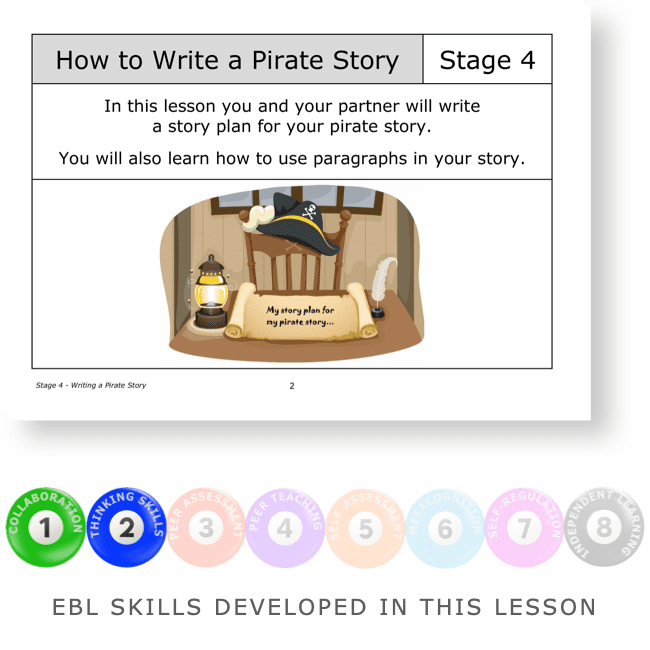 £2.00Add to basket
£2.00Add to basketPupils work with a partner learning to write a story plan for their pirate story.
They will use this with their mind map to write their story in the last stage of this five-stage activity.
This lesson develops collaborative learning and thinking skills which has been proven by research to be crucial for successful learning. As well as developing collaborative skills pupils also benefit from undertaking a fully-scaffolded activity.
VIEW -


Writing a Pirate Story – Now Write
£2.00 Add to basket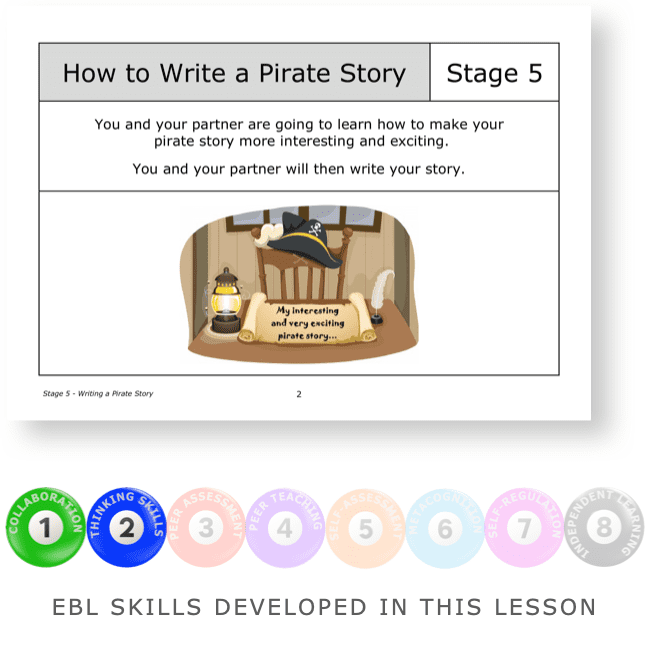 £2.00Add to basket
£2.00Add to basketPupils work with a partner to learn how to make their pirate story more interesting and exciting.
They will then write their pirate story.
This lesson develops collaborative learning and thinking skills which has been proven by research to be crucial for successful learning. As well as developing collaborative skills pupils also benefit from undertaking a fully-scaffolded activity.
VIEW -


Writing a Pirate Story – Grammar
£3.00 Add to basket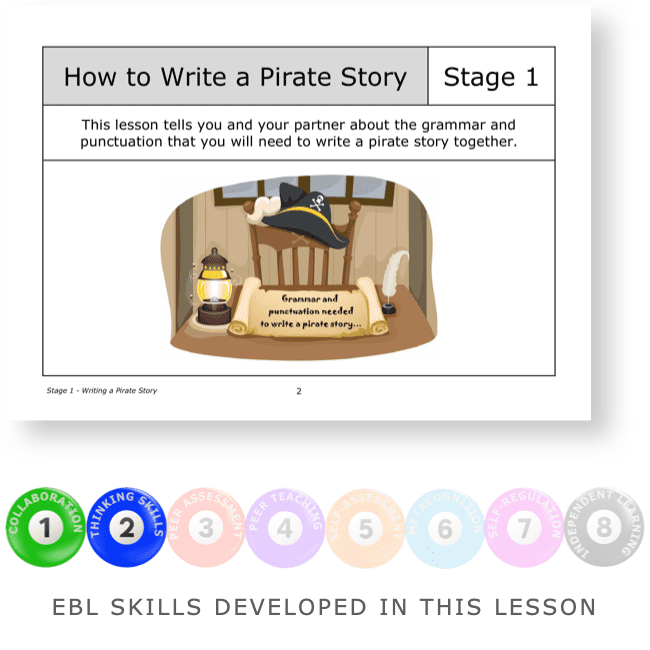 £3.00Add to basket
£3.00Add to basketPupils work with a partner to learn about the grammar and punctuation needed to write a pirate story.
This lesson develops collaborative learning and thinking skills which has been proven by research to be crucial for successful learning. As well as developing collaborative skills pupils also benefit from undertaking a fully-scaffolded activity.
VIEW -

 SAVE 25%
SAVE 25%How to Write a Pirate Story + PDF
£6.00 Add to basket £6.00Add to basket
£6.00Add to basketSave 25% when you buy all 5 lessons in this series:
- Stage 1. Writing a Pirate Story – Grammar
- Stage 2. Writing a Pirate Story – Mind Map
- Stage 3. Writing a Pirate Story – Adding Details
- Stage 4. Writing a Pirate Story – Story Plan
- Stage 5. Writing a Pirate Story – Now Write
VIEW

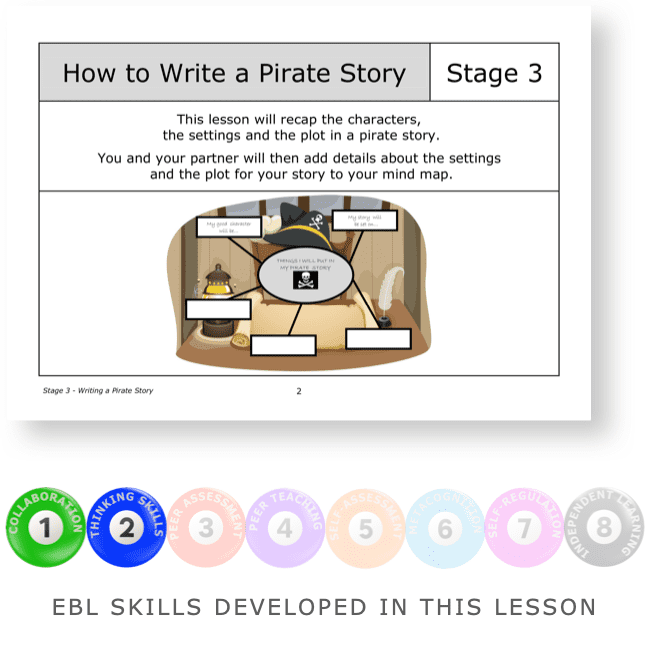

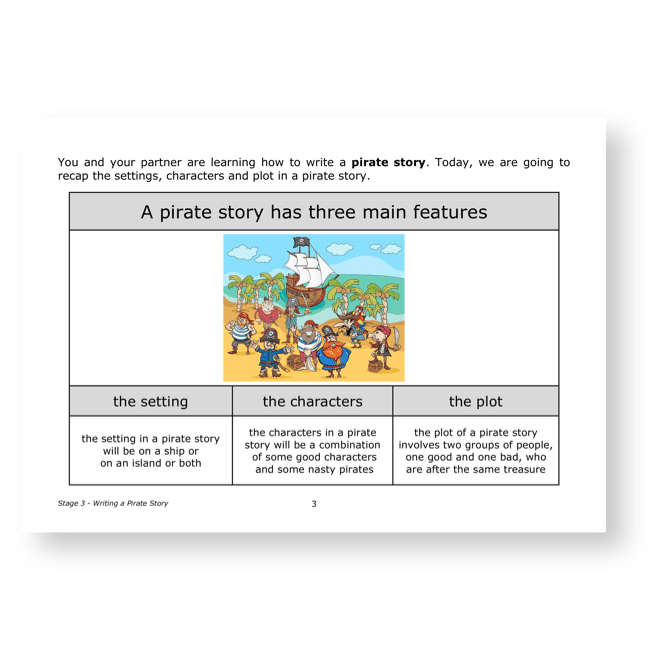
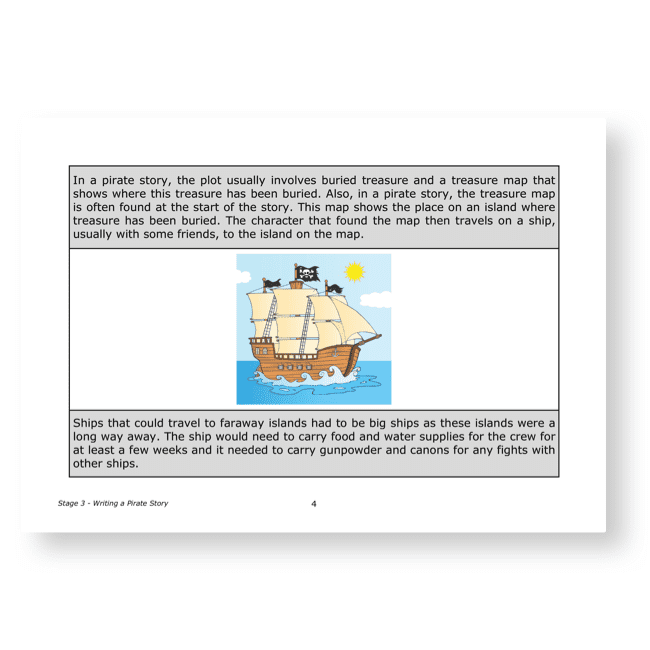

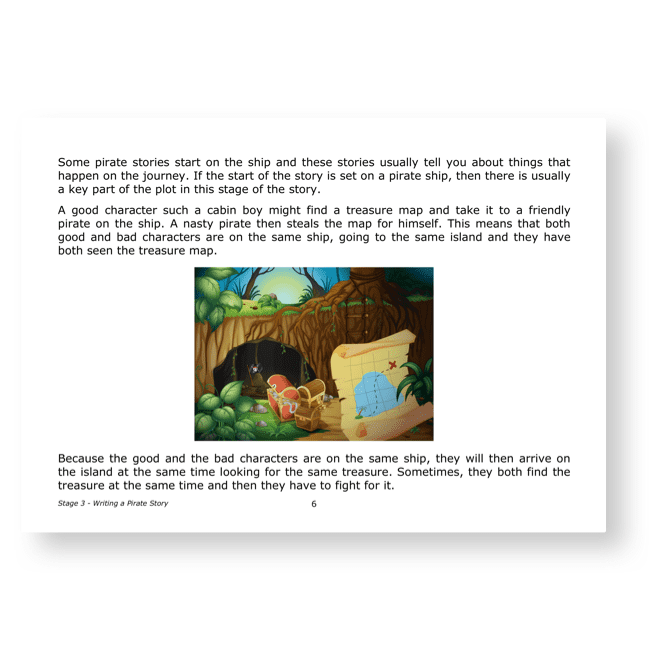

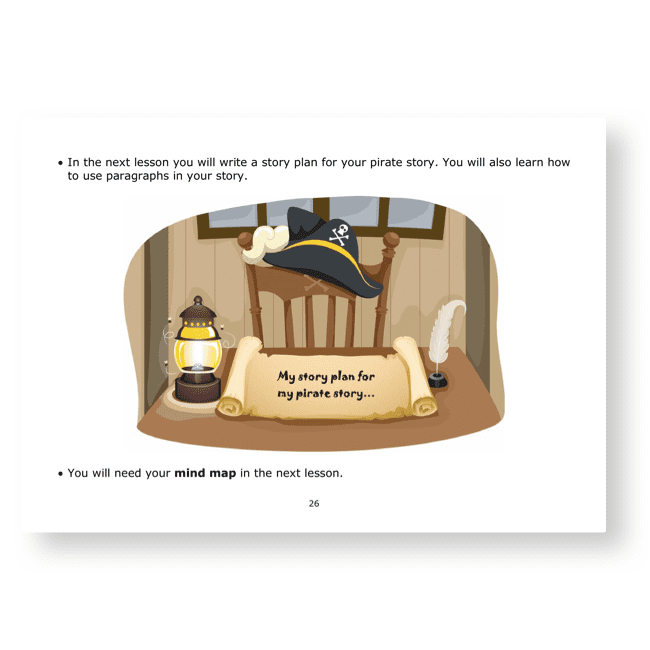

Philipem (verified owner) –
We asked a.i. to review this lesson. This is what it said:
“Writing a Pirate Story – Adding Details” – A Fantastic Resource for Collaborative Learning ⭐⭐⭐⭐⭐
The third lesson in the five-part “How to Write a Pirate Story” series is an absolute gem for teaching not just English skills, but evidence-based collaborative learning strategies too. In this engaging activity, pupils work in pairs to recap story elements like characters, settings, and plot while adding details to a mind map for their own pirate tale.
Research shows collaborative learning is crucial for academic success, allowing students to share ideas, give and receive feedback, and build essential interpersonal skills. This lesson nails the collaborative piece – partners learn and consolidate knowledge together through strategies like recapping and elaborative interrogation.
Not only that, but the lesson employs a masterful scaffolding approach, breaking down the complex task of story writing into manageable chunks. Students build understanding incrementally with well-structured support. By the end, they’ll have a fleshed out mind map and story mountain to guide their narrative writing in the next stage.
If you want to incorporate best practices for learning while delivering an imaginative English lesson, the “Writing a Pirate Story – Adding Details” resource can’t be beat. The pirate theme ensures high engagement, and the collaborative, scaffolded activities cultivate vital skills. I give it five shining stars!